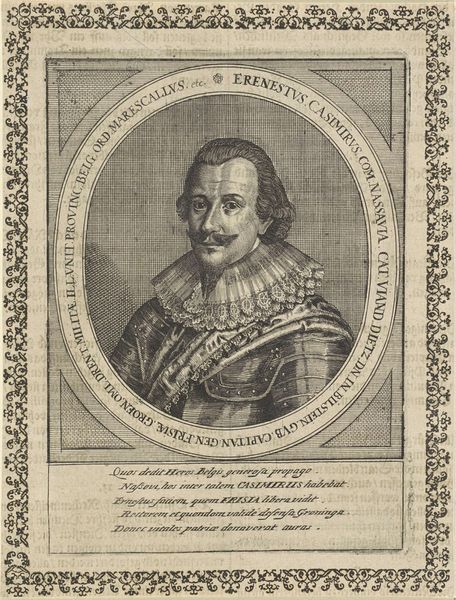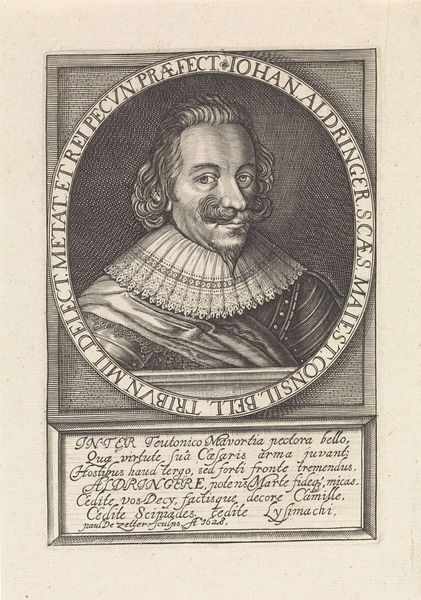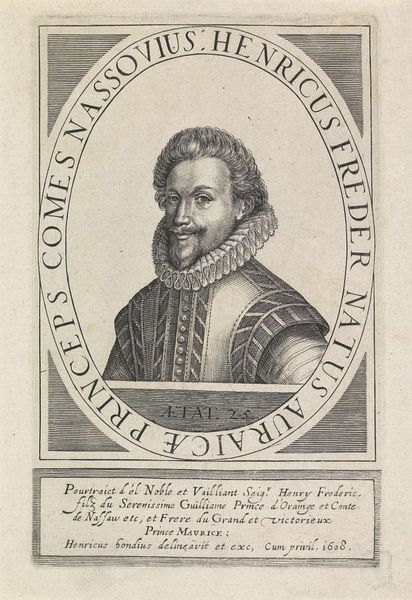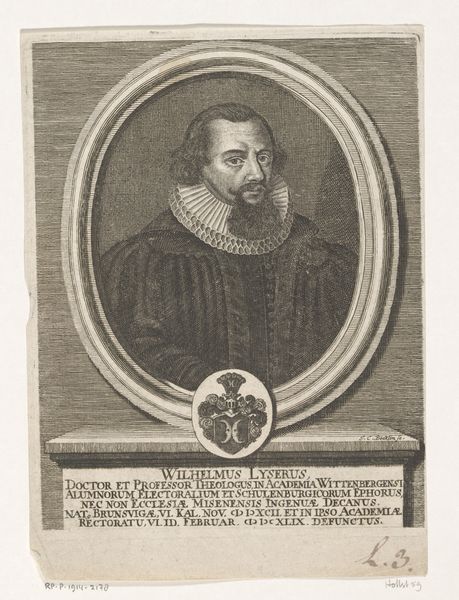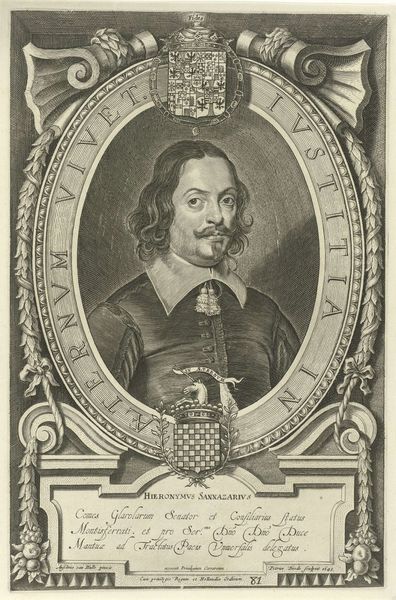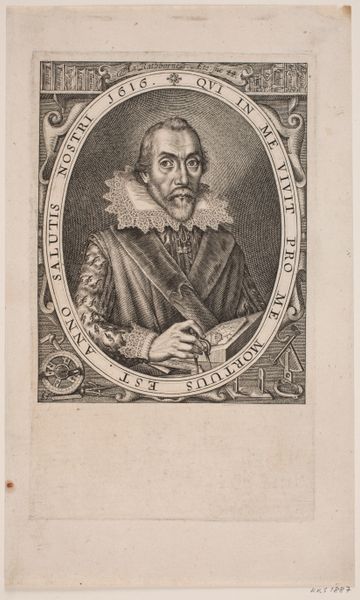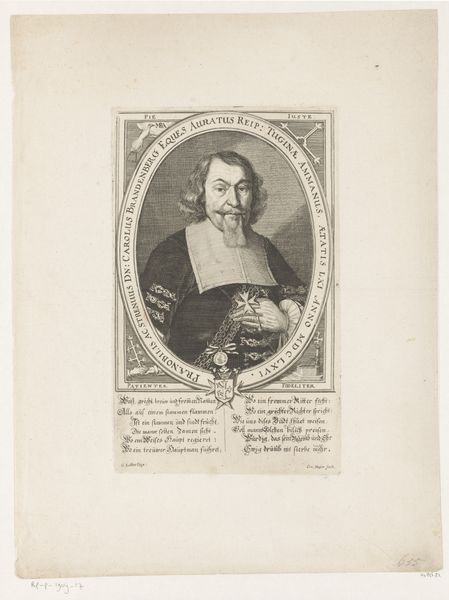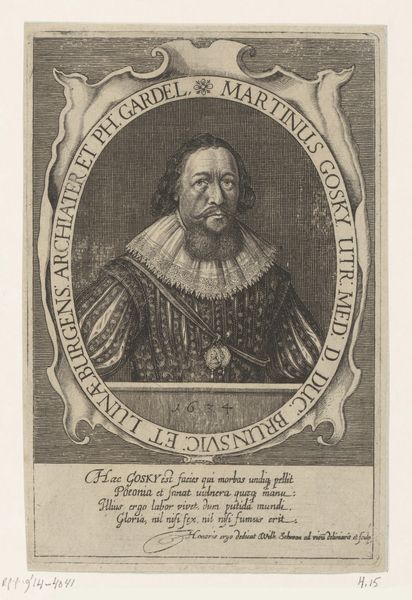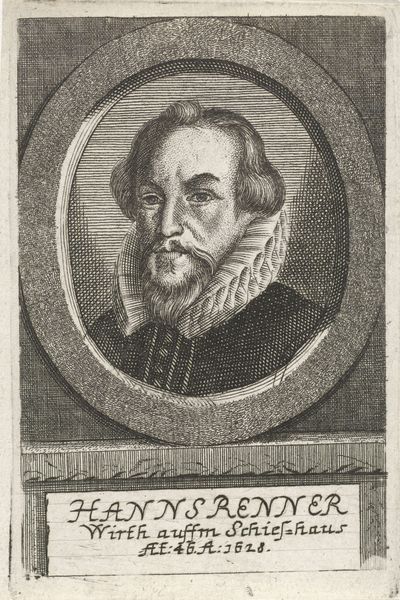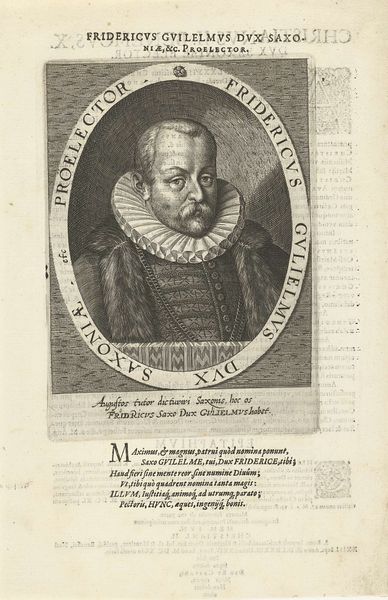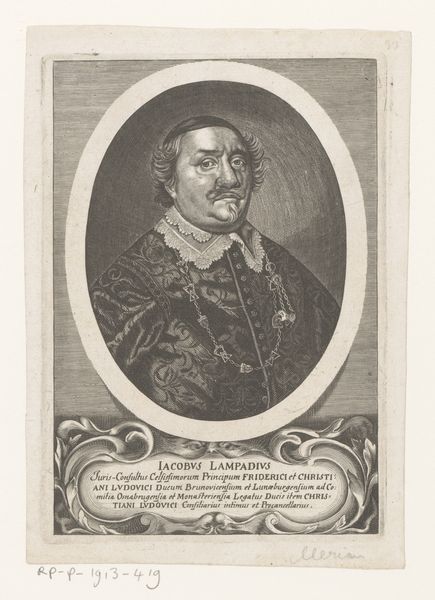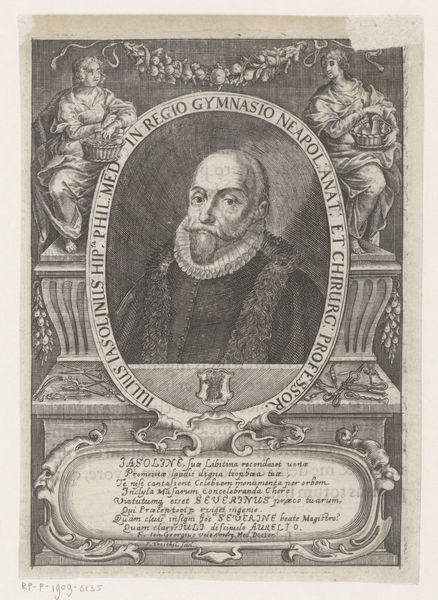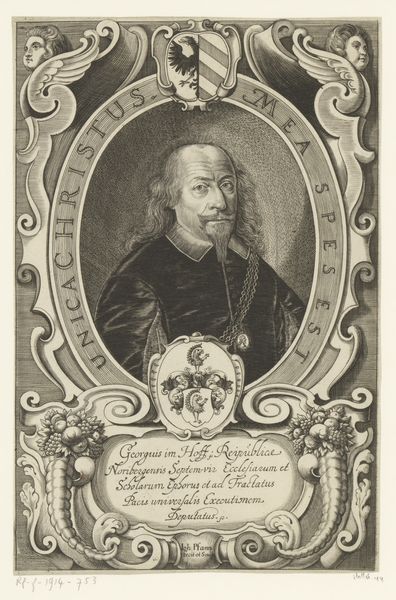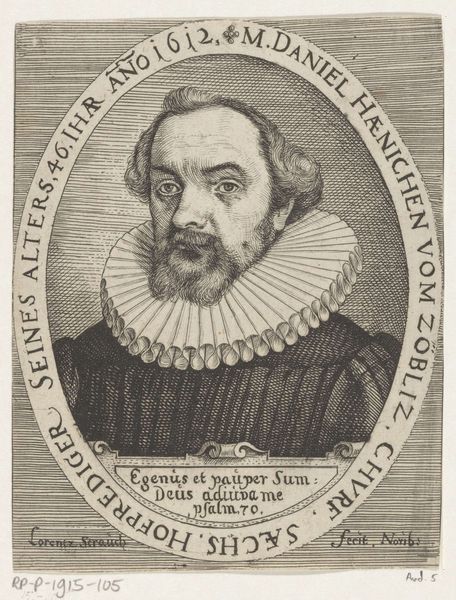
engraving
#
portrait
#
dutch-golden-age
#
11_renaissance
#
engraving
Dimensions: height 169 mm, width 129 mm
Copyright: Rijks Museum: Open Domain
Curator: We’re looking at a 17th-century engraving, “Portret van Johan VIII, graaf van Nassau-Siegen,” depicting Johan VIII, Count of Nassau-Siegen. Editor: My first thought is the weight of this image. It's striking how the engraver uses line and pattern to convey not only texture, particularly in the armor, but also this undeniable sense of power. You feel like you’re looking at a person of significant influence and standing. Curator: Indeed. Considering it’s an engraving, the details are impressive. We can see how the Dutch Golden Age portrait style was very concerned with realism and status. It isn’t just an image of a man; it's carefully constructed representation of authority during a politically turbulent time. Engravings were an ideal method for broader distribution of a person's likeness, cementing his public image. Editor: From a material standpoint, engravings are particularly interesting. The work involved is intense—a craftsman meticulously cutting lines into a metal plate, wiping ink, and pressing the image onto paper. We must not overlook the labour required in production, which elevates him for commissioning the piece as much as it memorializes him in perpetuity.. Curator: Absolutely, these portraits had an important public function beyond mere decoration. This print may have circulated amongst his supporters, perhaps even enemies, solidifying the perception of him as a formidable military leader through repeated circulation. This was about crafting his persona in a very deliberate manner, especially important for someone in such a prominent and contested position. Editor: Considering the era, engravings also facilitated discussions about trade and art dissemination, indicating cultural networks extended far beyond borders. Johan's image then participates in the global exchange of both artistry and political agendas. Curator: Ultimately, this portrait serves as more than just a static representation of a nobleman; it embodies complex political dynamics and material relationships of the 17th century. Editor: Exactly. The intersection of materiality and historical significance provides us with a much more complete portrait than just looking at the image on the surface.
Comments
No comments
Be the first to comment and join the conversation on the ultimate creative platform.
